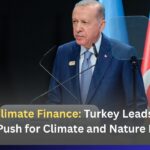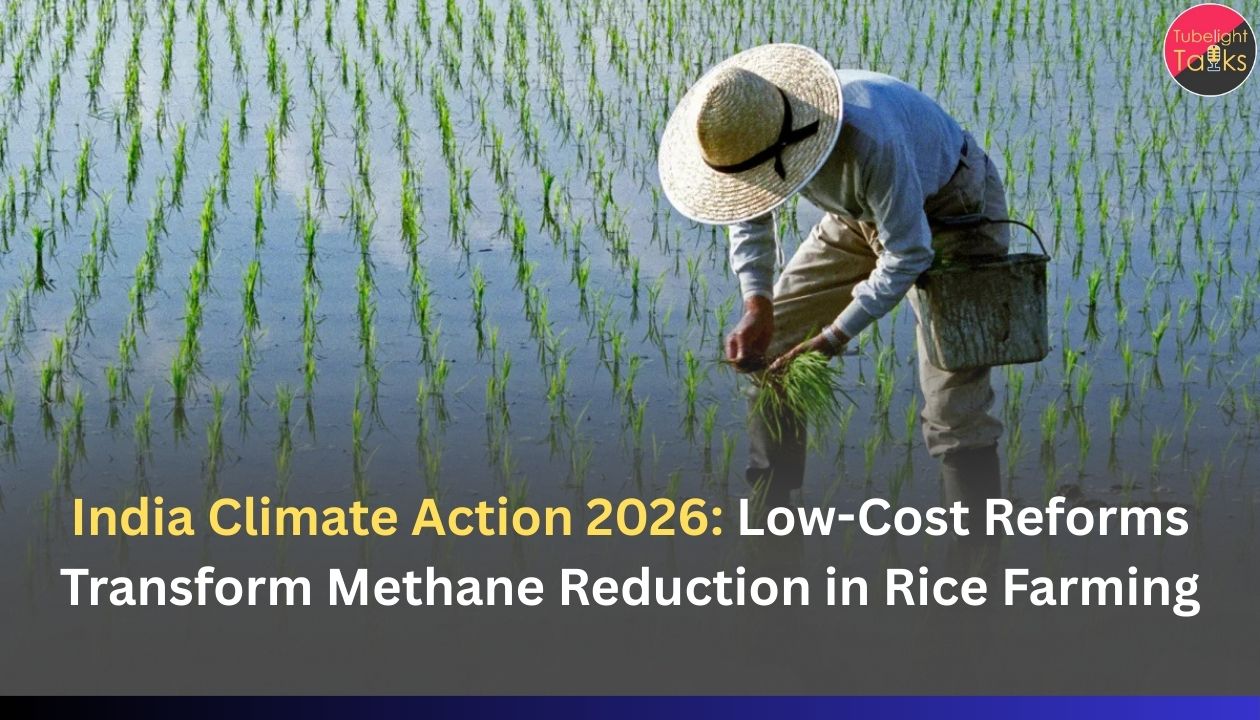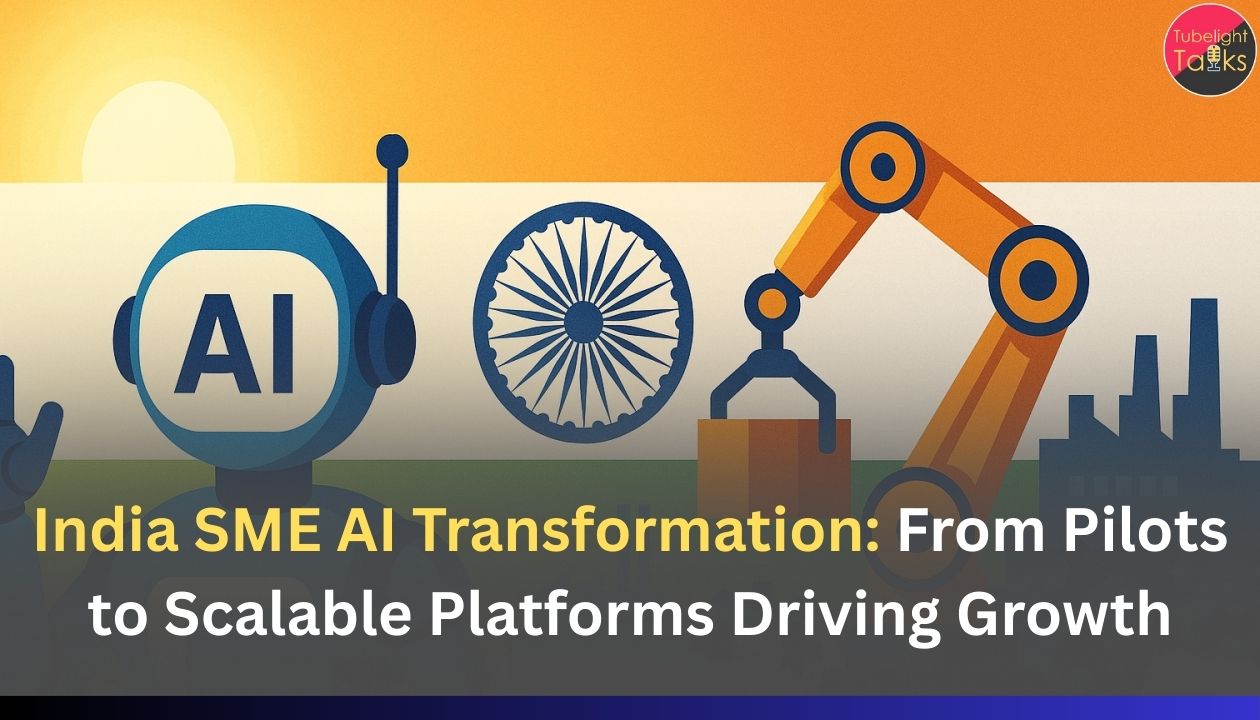India Climate Action 2026 highlights a breakthrough moment as the country targets one of its biggest sources of methane emissions—rice paddies. In 2026, India’s agricultural reforms focused on adopting low-cost, climate-smart techniques that cut methane from flooded fields, which form a major share of national greenhouse gases.
Policymakers prioritized sustainable, scalable practices that also boost yields, positioning methane-reduction in rice farming as the cheapest and most effective climate “booster dose” for millions of smallholder farmers operating with limited resources.
Cost-Effective Strategies for Reducing Methane from Rice Paddies
Alternate Wetting and Drying (AWD)
India adopted and expanded the use of AWD, a water management practice that reduces flooding duration and lowers methane emissions by up to 50 percent. The practice is simple, requiring minimal investment, yet significantly curbs emissions while maintaining yields.
Cover Cropping and Organic Inputs
Encouraging farmers to integrate organic matter, such as soil amendments and cover crops, enhanced soil health and reduced the need for waterlogging. Cover cropping also suppressed weeds, lowered fertilizer use, and promoted carbon sequestration.
Improved Wetland Drainage and Field Management
Efficient drainage techniques and precision water control devices helped farmers manage water levels more effectively, enabling periodic drainage that prevents excessive methane buildup without harming crop productivity.
Demonstrable Impact and Cost Savings
Economic Benefits for Farmers
By adopting these practices, farmers experienced immediate benefits—reductions in water use, fertilizer costs, and methane emissions—at little or no extra expense. The approach made climate action affordable and scalable, especially for smallholder farmers.
Emissions Reduction and Climate Goals
The reforms contributed significantly toward India’s national climate commitments by reducing methane emissions from agriculture, a critical step toward achieving gross emissions targets and contributing low-cost ‘climate booster’ effects.
Integration with Broader Climate and Food Security Goals
Resilient and Sustainable Cropping Systems
Cost-effective methane management improved water efficiency and soil health, bolstering resilience against droughts and floods. It also enhanced yields, supporting food security under changing climate conditions.
Synergy with Policy and Innovation
India’s reforms integrated traditional knowledge with modern tools, supported by government subsidies, training programs, and digital platforms that helped farmers adopt and optimize these practices at scale.
Balance and Humility in Progress
The teachings of Sant Rampal Ji Maharaj stress the importance of truth, humility, and balance in all pursuits, including environmental stewardship. The 2026 reforms embody Satgyan’s message—using simple, honest approaches to achieve profound, positive change.
Opting for low-cost, sustainable methods to reduce methane demonstrates that true progress comes from nature-friendly, ethical actions—aligning human effort with divine harmony. By embracing righteousness, India’s farmers and policymakers embody Satgyan’s guiding principle—progress rooted in truth, humility, and collective welfare.
Key Facts
- India’s 2026 agriculture reforms prioritized methane reduction from rice paddies using affordable practices like AWD, organic amendments, and water management.
- Methane emissions from rice paddies substantially decreased, supporting India’s climate commitments.
- Adoption of low-cost approaches led to immediate economic benefits for smallholder farmers.
- Water saving, yield stability, and soil health improvements were integral to the reforms.
- The reforms exemplify the low-cost climate ‘booster dose’—cost-effective, scalable, and impactful for India’s rural economy.
- Progress aligns with India’s broader climate, food security, and sustainable development goals.
Expert Perspectives on Climate-Resilient Agriculture
Climate Scientists and Agronomists
They praise India’s strategic use of simple, proven, and affordable methane mitigation practices as scalable solutions that can be adopted worldwide to support climate and resilience goals.
Policy and Development Experts
They emphasize that India’s approach demonstrates how low-cost, scientifically backed practices can be embedded into policy frameworks for climate-smart agriculture, maximizing impact with minimal expenditure.
Looking to the Future: Low-Cost Climate Action as a Global Model
Scaling Simple Solutions for Broader Impact
India’s experience proves that scalable, low-cost methods like AWD and organic management are vital in closing implementation gaps globally, especially for resource-limited smallholders.
Integrating Climate and Agriculture Policy
Future strategies will deepen the linkages between climate mitigation, adaptation, and food security, ensuring that low-cost actions become foundational elements of climate-resilient development.
Also Read: Nearly 90 % of Satellite‑Detected Methane Leaks Are Ignored — UN Sounds Alarm
FAQs: India Climate Action 2026
What is India’s main low-cost climate ‘booster’ for rice?
Alternate Wetting and Drying (AWD) and organic soil management.
How does this help farmers financially?
It reduces water, fertilizer, and methane costs, improving profitability.
Are these practices scalable?
Yes, with government support, training, and digital tools, they can be widely adopted, especially among smallholders.
Do methane reductions significantly impact climate goals?
Yes, methane is a potent greenhouse gas, and reducing it enhances climate mitigation efforts.
What does this teach about sustainable development?
That affordable, simple techniques can effectively deliver environmental and socio-economic benefits simultaneously.
This overview combines government policies, scientific research, and expert insights to showcase how India’s low-cost methane reduction strategies in rice paddies during 2024–26 marked a pivotal step towards climate resilience and sustainable development.










